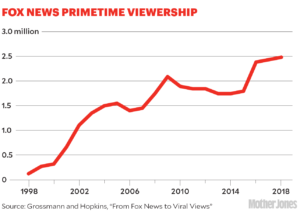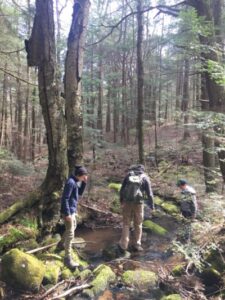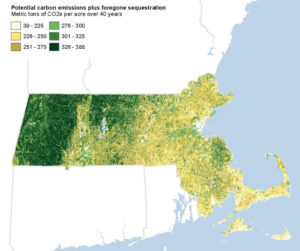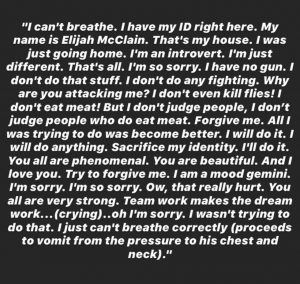Upworthy
‘Civil’ Society
October 8, 2021Kurt Thigpen was met with vitriol shortly after he became a school board member in Washoe County, Nevada. Credit: David Calvert, special to ProPublica
We’re Losing Our Humanity, and the Pandemic Is to Blame
“What the hell is happening? I feel like we are living on another planet. I don’t recognize anyone anymore.”
by Sarah Smith
Kurt Thigpen clenched his hands around the edge of the table because if he couldn’t feel the sharp edges digging into his palms, he would have to think about how hard his heart was beating. He was grateful that his mask hid his expression. He hoped that no one could see him sweat.
A woman approached the lectern in the center aisle, a thick American flag scarf looped around her neck.
“Do you realize the mask, the CDC said it’s only 2% effective?” she demanded. “You’re failing our children, you’re failing our country, you’re failing our students’ future ….”
Thigpen fixed his eyes on a spot in the back of the blue-and-green auditorium. He let the person speaking at the lectern fade. It will be over soon, he told himself.
“No, you’re not the boss of me, you work for us, I can’t breathe with it on —”
“Ma’am —”
“Don’t you dare cut my microphone —”
The crowd cheered. Thigpen focused on his breathing.
It will end soon, he told himself. It must. His sweat turned cold under his suit.
“The science isn’t there, take the kids outta the masks and let’s move on.”
When the eight-hour meeting finally ended, he would drive home and pull off the suit and rip off his shirt. He would only take care with his rainbow tie, resting it gently in the closet. It still hangs there today. He would close the door, lay down on his bed, and let himself cry.
The stories of cruel, seemingly irrational and sometimes-violent conflicts over coronavirus regulations have become lingering symptoms of the pandemic as it drags through its second year. Two men on a Mesa-to-Provo flight got into a cross-aisle fight after one refused to wear a mask. A Tennessee teenager asking his school board to impose a mask mandate in honor of his grandmother who died of COVID-19 got jeered by the crowd. A California parent angered by the requirement that his child wear a mask allegedly beat up a teacher so badly that the teacher had to go to the emergency room. An Arizona father showed up to an elementary school with zip ties, allegedly intending to make a “citizen’s arrest” over COVID-19 rules. A Missouri medical center has distributed panic buttons to about 400 employees after an increase in assaults on health care workers by people frustrated over coronavirus-induced visitation restrictions and long wait times.
“What the hell is happening?” said Rachel Patterson, who owns a hair salon in Huntsville, Alabama, and who has been screamed at, cussed out and walked out on for asking clients to don a mask. “Like, I feel like we are living on another planet. Like I don’t — I don’t recognize anyone anymore.”
Full piece: https://www.propublica.org/article/were-losing-our-humanity-and-the-pandemic-is-to-blame
Upworthy:
The National School Boards Association sent a letter to the Biden Administration stating that, “These heinous actions could be the equivalent to a form of domestic terrorism and hate crimes.”
The threats have prompted U.S. Attorney General Merrick Garland to address the issue. In response, Garland directed federal authorities to meet with local law enforcement over the next month to discuss strategies for addressing the increase in “harassment, intimidation and threats of violence against school board members, teachers and workers” in public schools across the country.
Just about every American would agree that we should work to protect school board members from threats of violence. However, Fox News reporter Peter Doocy used Garland’s decision to crack down on violent threats as a way to rile up conservatives.
Just about every American would agree that we should work to protect school board members from threats of violence. However, Fox News reporter Peter Doocy used Garland’s decision to crack down on violent threats as a way to rile up conservatives.
He completely mischaracterized Garland’s directive in a question he asked White House Press Secretary Jen Psaki on Wednesday.
“Does the administration agree that parents upset about their kids’ curriculums could be considered domestic terrorists?” he asked.
“Let me unravel this a little bit,” Psaki answered, saying that Garland is “correct” to say that threats of violence against public servants “run counter to our nation’s core values.”
“Regardless of the reasoning,” she said, “threats and violence against public servants is illegal.”
FOX NEWS mandate from TV host Tucker Carlson [HuffPost]
Your response when you see children wearing masks as they play should be no different from your response when you see someone beat a kid in Walmart. Call the police immediately. Contact child protective services. Keep calling until someone arrives. What you’re looking at is abuse, it’s child abuse, and you’re morally obligated to attempt to prevent it.”
MOTHER JONES:
September/October issue
The Real Source of America’s Rising Rage
We are at war with ourselves, but not for the reasons you think.
by Kevin Drum
Americans sure are angry these days. Everyone says so, so it must be true.
But who or what are we angry at? Pandemic stresses aside, I’d bet you’re not especially angry at your family. Or your friends. Or your priest or your plumber or your postal carrier. Or even your boss.
Unless, of course, the conversation turns to politics. That’s when we start shouting at each other. We are way, way angrier about politics than we used to be, something confirmed by both common experience and formal research.
When did this all start? Here are a few data points to consider. From 1994 to 2000, according to the Pew Research Center, only 16 percent of Democrats held a “very unfavorable” view of Republicans, but then these feelings started to climb. Between 2000 and 2014 it rose to 38 percent and by 2021 it was about 52 percent. And the same is true in reverse for Republicans: The share who intensely dislike Democrats went from 17 percent to 43 percent to about 52 percent.
Likewise, in 1958 Gallup asked people if they’d prefer their daughter marry a Democrat or a Republican. Only 28 percent cared one way or the other. But when Lynn Vavreck, a political science professor at UCLA, asked a similar question a few years ago, 55 percent were opposed to the idea of their children marrying outside their party.
Or consider the right track/wrong track poll, every pundit’s favorite. Normallythis hovers around 40–50 percent of the country who think we’re on the right track, with variations depending on how the economy is doing. But shortly after recovering from the 2000 recession, this changed, plunging to 20–30 percent over the next decade and then staying there.
Finally, academic research confirms what these polls tell us. Last year a team of researchers published an international study that estimated what’s called “affective polarization,” or the way we feel about the opposite political party. In 1978, we rated people who belonged to our party 27 points higher than people who belonged to the other party. That stayed roughly the same for the next two decades, but then began to spike in the year 2000. By 2016 it had gone up to 46 points—by far the highest of any of the countries surveyed—and that’s beforeeverything that has enraged us for the last four years.
A million trees by 2030.
October 2, 2021When you donate to Trees for Jane or plant your own tree, you will receive a digital certificate in recognition of your simple but essential contribution to helping our planet become green again!
Each certificate will include your name, donation or tree registration date, and a personal serial number used to track global participation. Each certificate will also be electronically signed by Jane.
OUR MISSION
“Our global mission is to help everyone to support broad-scale community-based forest protection and restoration efforts. We also want to inspire individuals of all walks of life, everywhere, to plant and care for their own trees.
Our mission is aligned with the United Nations’ Decade on Ecosystem Restoration initiative and the Trillion Tree Campaign with 1t.org—a global call to action to protect and restore one trillion trees by 2030.”
“Planting one tree might seem like a small thing to do as we face such an enormous crisis. But Trees for Jane believes that everyone can make a difference. You plant one tree, but then thousands, maybe millions more like you around the world do the same—it all adds up to a more healthy and sustainable planet.
Beyond helping to save the climate and the environment, planting trees can be good for personal health, especially in urban areas where trees provide shade, beauty, joy, and many other benefits. Planting and caring for a tree can also be a great way to connect to nature.
Trees, like all living creatures, require ongoing care. And on a social level, tree planting can bring people together, serve to commemorate a special occasion, or be an excellent gift for someone special.”
#TreesForJane
Tree Planting Guide
UPWORTHY
These organizations are planting trees to combat the “urban heat island effect” in Richmond
America’s urban areas are often known as concrete jungles due to their abundance of asphalt and lack of parks and natural grassy areas. These neighborhoods are often populated by low-income, communities of color because of discriminatory lending practices known as redlining. These policies, which date back to the 1930s, were put in place to reinforce racial segregation and reallocate city funds to white neighborhoods.
Redlining policies perpetuated inequality that was not only economic but environmental as well.
The buildings, roads, and unnatural infrastructure that make up urban areas absorb and re-emit the sun’s heat more than natural landscapes. This turns urbanized areas into “heat islands” that experience warmer temperatures than greener, less populated neighborhoods.
Richmond, Virginia’s urban heat islands can reach temperatures as much as 20 degrees warmer than the greener areas of the city. Heat islands look to become an even greater problem in the coming years as extreme temperature shifts caused by climate change become more common.
To help create green space in heat-island communities, Capital One is supporting the Arbor Day Foundation and Groundwork RVA with $75,000 in grant funding to plant and distribute roughly 300 trees in affected neighborhoods across Richmond.
“Greenspace and access to fresh food [are] vital to the communities we serve. We are proud to work with Groundwork RVA and the Arbor Day Foundation to help address those needs here in Richmond,” said Andrew Green, Director of Capital One’s Office of Environmental Sustainability.
Together, the three organizations will strive to improve green infrastructure in three areas that have been identified as some of the hottest, least-resourced in Richmond.
This is just one isolated reason as to why we need to…must…plant trees. -dayle
WBUR Boston
Sandy Brook in the Bobryk forest, which sits between Sandisfield and New Marlborough, Mass. in the Berkshires. (Courtesy Markelle Smith/The Nature Conservancy)
“In the big scheme of things, the Bobryk forest is pretty small potatoes. It’s about 300 acres of birch, hemlock and other hardwood trees, sandwiched between two larger state forests in western Massachusetts.
“It feels weird to say this forest isn’t special because that’s not what I mean,” says Laura Marx, a forest ecologist at The Nature Conservancy in Massachusetts. Rather, says Marx, Bobryk forest is “a really cool example” of things gone right, and an illustration of exactly how preserving forests might help slow climate change.
When the privately owned forest went on the market in 2020, The Nature Conservancy, the Berkshire Natural Resources Council and the state of Massachusetts put Bobryk forest into conservation to protect it from development.
That means that about 136,000 metric tons of carbon dioxide already stored in the trunks and roots of Bobryk trees stayed there, says Marx. And each year going forward, the trees should remove and store another 190 metric tons of carbon dioxide. That’s roughly equal to the emissions of 58 cars and trucks.
Sandy Brook in the Bobryk forest, which sits between Sandisfield and New Marlborough, Mass. in the Berkshires. (Courtesy Markelle Smith/The Nature Conservancy)
Marx drew these numbers from a report released Tuesday that attempts to quantify exactly how much carbon dioxide could be kept out of the sky by preserving forests in the region.
The report by researchers at Clark University, called “Avoided Deforestation: A Climate Mitigation Opportunity in New England and New York,” provides hard numbers for officials trying to hit their climate goals — for instance, Massachusetts’ ambitious plan to reach net-zero carbon emissions by 2050.
[…]
Massachusetts is losing about 5,000 acres of forest each year, according to Mass Audubon. That’s an area about half the size of Provincetown cut down, mostly for housing developments, commercial sites and solar farms. By doing this, the state adds the equivalent of about 1.3 million metric tons of carbon dioxide into the atmosphere each year.
“In the state of Massachusetts, that’s equal to 2% of the state’s fossil fuel emissions across all sectors in the year 2018,” says study author Christopher Williams, a professor in Clark University’s Graduate School of Geography. “Even though it’s only 5,000 acres per year, it still adds up.”
Map of “carbon consequences.” If any given point on the map is deforested, the map shows the net carbon dioxide emission equivalents over the next 40 years. (Courtesy The Nature Conservancy)
I can’t stop thinking about Elijah.
June 30, 2020Remember his name. Say his name.
Elijah McClain.
Yes. Absolutely. #Justice for Elijah. And with every thought, every chant, every protest, remember, Elijah should still be alive. He was 23.
His mom: “He was a responsible and curious child … who could inspire the darkest soul.”
In the weeks following Elijah’s death last summer [2010], his mother, Sheneen, would sit in her car and cry for up to three hours at a time. Now it’s down to an hour and a half. ““The wind will blow, and I’ll think about him.” [Denver Post]
Elijah was known as a gentle soul, a massage therapist who played violin for shelter kittens on his lunch break in his hometown of Aurora, Colorado, because he thought the animals were lonely. He taught himself to play. “He was ‘quirky, a pacifist, a vegetarian, enjoyed running, and known to put a smile on everyone’s face.’
When a demonstrably tender and sweet soul like Elijah McClain is killed from a police encounter and no wrongdoing is found, it’s long past time to examine the rules that govern the entire system. No one in their right mind can say this young man shouldn’t be alive right now, playing violin for lonely kittens on his lunch hour. [Upworthy]
Gov. Jared Polis ordered Attorney General Phil Weiser to serve as a special prosecutor in a new investigation into Elijah’s death.
Elijah’s last words.
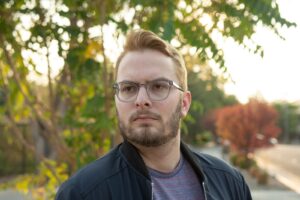

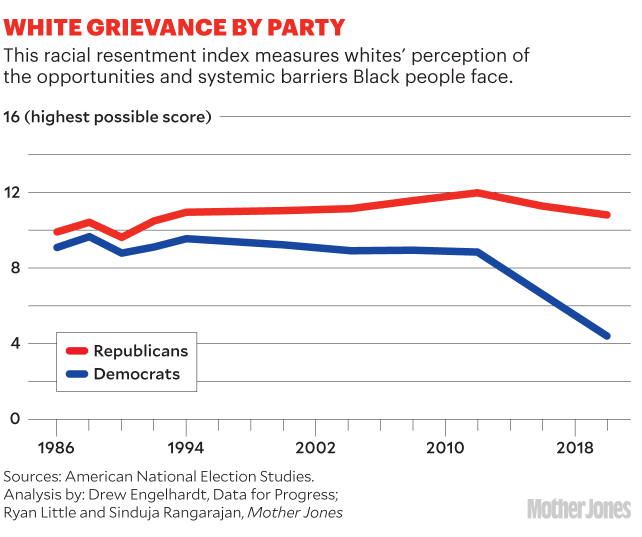 What do we know about more recent views of racism? One thing we know for sure is that both white and Black Americans have gotten
What do we know about more recent views of racism? One thing we know for sure is that both white and Black Americans have gotten 